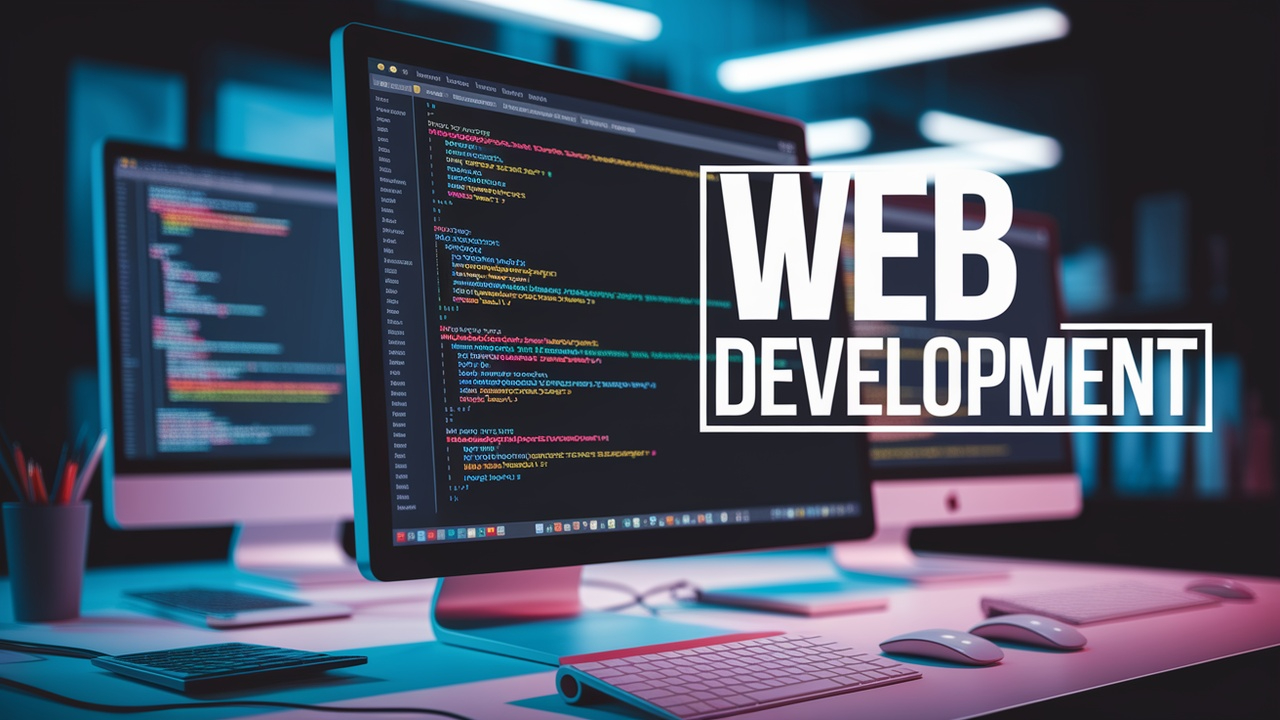
This comprehensive course on web development is designed for beginners and progresses to advanced topics, equipping you with the essential skills to create and manage websites. Covering front-end and back-end technologies, this course offers hands-on projects and quizzes to reinforce learning at every step.
Course Levels
-
Level 1: Introduction to Web Development
This level introduces the basic concepts of web development, including the structure and components of a website.
-
Level 2: Building Your First Website
In this level, you will learn how to create a simple static website using HTML, CSS, and JavaScript.
-
Level 3: Advanced Front-End Development
This level dives deeper into front-end technologies and frameworks, enhancing your web development skills.
-
Level 4: Back-End Development Basics
In this level, you will be introduced to server-side programming and databases, essential for full-stack development.
-
Level 5: Full-Stack Development
This level combines your knowledge of front-end and back-end technologies to build complete web applications.
-
Level 6: Advanced Topics in Web Development
Explore advanced concepts and tools that enhance your web applications and improve performance.
-
Level 7: Real-World Projects
In this final level, you will apply everything you've learned to complete real-world projects, enhancing your portfolio.
Course Topics
-
Basic Authentication and Security
# Basic Authentication and Security In the realm of web development, ensuring the security of user data and application integrity is paramount. This section covers the fundamentals of basic authentic...
-
Deploying Your Website
# Deploying Your Website Deploying your website is an essential step in web development that allows users to access your work on the internet. This guide will walk you through the steps required to d...
-
JavaScript Basics: Interactivity
# JavaScript Basics: Interactivity As you embark on your journey to build your first website, understanding how to make your web pages interactive is crucial. JavaScript is the primary language used ...
-
Introduction to JavaScript
# Introduction to JavaScript JavaScript is a high-level, dynamic, untyped, and interpreted programming language that is widely used in web development. It is one of the core technologies of the World...
-
Understanding Web Accessibility (a11y)
# Understanding Web Accessibility (a11y) Web Accessibility, often abbreviated as a11y, refers to the practice of making web applications and websites usable by people of all abilities and disabilitie...
-
Integrating Front-End and Back-End
# Integrating Front-End and Back-End In modern web development, the integration of front-end and back-end technologies is crucial for building robust and efficient web applications. This topic will e...
-
Advanced CSS Techniques (Flexbox and Grid)
# Advanced CSS Techniques (Flexbox and Grid) In modern web development, CSS has evolved significantly, allowing developers to create complex layouts with ease. Two of the most powerful layout systems...
-
Deployment of Full-Stack Applications
# Deployment of Full-Stack Applications Deploying a full-stack application involves making both the front-end and back-end components of your application accessible over the internet. This process ca...
-
Creating a Blog Application
# Creating a Blog Application Creating a blog application is a great way to put your web development skills into practice. In this topic, we will cover the essential components required to build a si...
-
Introduction to Node.js
# Introduction to Node.js Node.js is a powerful JavaScript runtime built on Chrome's V8 JavaScript engine. It allows developers to execute JavaScript code server-side, enabling the creation of scalab...
-
Introduction to Front-End Frameworks (React.js)
# Introduction to Front-End Frameworks (React.js) ## Overview React.js is a popular JavaScript library for building user interfaces, particularly single-page applications (SPAs). Developed by Faceboo...
-
Building a Portfolio Website
# Building a Portfolio Website Creating a portfolio website is an essential task for any web developer looking to showcase their skills, projects, and professional journey. This guide will walk you t...
-
Understanding HTML Basics
# Understanding HTML Basics HTML, or HyperText Markup Language, is the standard markup language used to create web pages. It is the backbone of web development, allowing developers to structure conte...
-
Version Control with Git
# Version Control with Git Version control is an essential skill for any developer, and Git is one of the most widely used version control systems in the world. This topic will cover advanced feature...
-
Developing an E-commerce Site
# Developing an E-commerce Site Creating an e-commerce site involves many crucial steps, from planning and designing to development and deployment. In this section, we will cover the key aspects of b...
-
Contributing to Open Source Projects
# Contributing to Open Source Projects Contributing to open source projects is a fantastic way for developers to collaborate, learn, and build their portfolios. Open source projects are software proj...
-
Understanding Servers and Hosting
# Understanding Servers and Hosting In the world of web development, understanding servers and hosting is crucial. This topic will cover the fundamental concepts of servers, types of hosting, and how...
-
Progressive Web Apps (PWAs)
# Progressive Web Apps (PWAs) Progressive Web Apps (PWAs) are a new breed of web applications that can provide a seamless experience akin to that of native applications. They leverage modern web tech...
-
Building a Full-Stack Application
# Building a Full-Stack Application In this section, we will explore the process of building a full-stack application. A full-stack application typically consists of a client-side (frontend), server-...
-
Creating RESTful APIs
# Creating RESTful APIs In modern web development, RESTful APIs (Representational State Transfer) are a crucial component that enables communication between client and server applications. Understand...
- And 15 more topics...